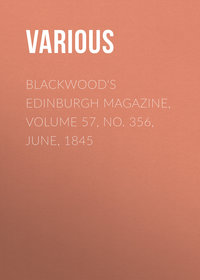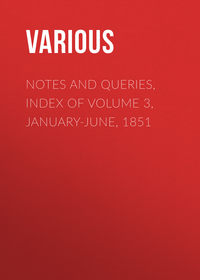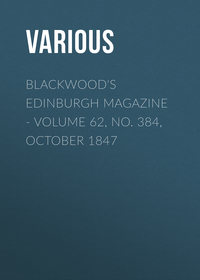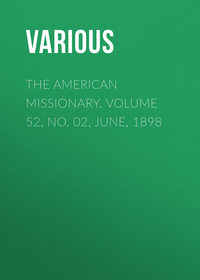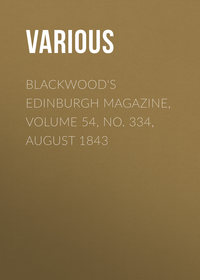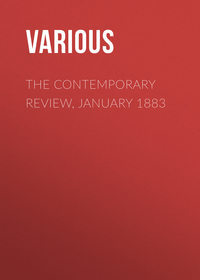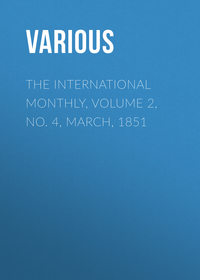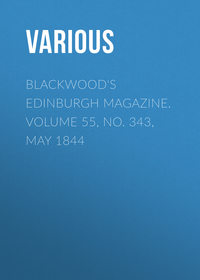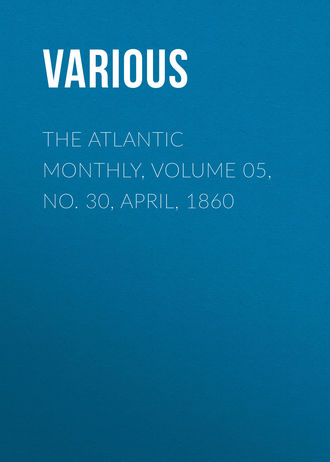 полная версия
полная версияThe Atlantic Monthly, Volume 05, No. 30, April, 1860
"When, therefore, Bernadotte," says he, "at that time French Ambassador at Vienna, and sharer in the admiration which the Lichnowskis and others of high rank felt for Beethoven, proposed to him to pay his homage to the hero [Napoleon] in a grand instrumental work, he found the artist in the best disposition thereto; perhaps such thoughts had already occurred to his mind. In the year 1802, in autumn, he put his hand already to the work, began first in the following year earnestly to labor upon it, and, with many interruptions, and the production of various compositions in the mean time, completed it in 1804."
From this passage, and from remarks in connection with it, it is clear that Professor Marx supposes Bernadotte to have been in Vienna in 1802-3, and to have ordered this symphony of Beethoven. Schindler's words, when speaking of his conversation with the composer in 1823, on this topic, are,—"Beethoven erinnerte sich lebhaft, dass Bernadotte wirklich zuerst die Idee zur Sinfonie Eroica in ihm rege gemacht hat" (Beethoven remembered distinctly that it really was Bernadotte who first awakened in him the idea of the "Heroic Symphony"). On turning to the article on Bernadotte in the "Conversations-Lexicon," we find that the period of his embassy embraced but a few months of the year 1798.
It seems to us a very suggestive and important fact toward the comprehension of Beethoven's design in this work, that the conception of it had been floating before his mind and slowly assuming definite form during the space of four years, before he put hand to the composition. Six years passed from the date of its conception before it lay complete upon his table, with the single word "Bonaparte" in large letters at the top of the title-page, and "L. Beethoven" at the bottom, with nothing between. And what, according to Marx, is this product of so much study and labor? A musical description of a battle; a funeral march to the memory of the fallen; the gathering of the armies for their homeward march; a description of the blessings of peace. A most lame and impotent interpretation! Marx somewhere says, that Beethoven never wrought twice upon the same idea; hence the funeral march of the Symphony cannot have been originally intended in honor of a hero,—we agree with him so far,—for this task he had once already accomplished in the Sonata, Op. 26. But then, if the first movement of the Symphony be a battle-piece, how came its author to compose another, and one so entirely different, in 1812?
How any one—with the recollection of Beethoven's fondness for describing character in music, even in youth upon the pianoforte,—with the "Coriolanus Overture" before him, and the "Wellington's Victory at Vittoria" at hand,—and, above all, with any knowledge of the composer's love for the universal, the all-embracing, and his contempt for minute musical painting, as shown by his sarcasms upon passages in Haydn's "Creation"—can suppose the first movement of the "Heroic Symphony" to be in the main intended as a battle-picture, passes our comprehension. It may be so. It is but a matter of opinion. We have nothing from Beethoven himself upon the point, unless we may suppose, that, when, four years later, he printed upon the programme, at the first performance of the "Pastoral Symphony," "Rather the expression of feeling than musical painting," he was guarding against a mistake which had been made as to the intent of the "Eroica."
We have no space to waste in following Marx, either through his exposition of his battle theory, his explanations of the other movements of the Symphony, or his polemics against previous writers. His programme seems to us little, if at all, better than those which he controverts. Instead of this, we venture to offer our own to the reader's common sense, which, if it does not satisfy, at least shows that Marx has not put the question forever at rest.
"Rather the expression of feeling than musical painting" seems to us a key to the understanding of this, as well as of the "Pastoral Symphony." Mere musical painting, and the composition of works to order,—as is proved by the "Wellington's Victory," the "Coriolanus Overture," the music to "Prometheus," to the "Ruins of Athens," the "Glorreiche Augenblick," to say nothing of minor works, such as the First and Second Concertos, the Horn Sonata, etc.,—Beethoven could and did despatch with extreme rapidity; but works of a different order, for which he could take his own time, and which were to be the expression of the grand feelings of his own great heart,—the composition of these was no light holiday-task. He could "make music" with all ease and rapidity; and had this been his aim, the extreme productiveness of the first years in Vienna shows that he might, perhaps, have rivalled Father Haydn himself in the number of his instrumental compositions. His difficulty was not in writing music, but in mastering the poetic conception, and finding that tone-speech which should express in epic progress, yet in obedience to the laws of musical form, the emotions, feelings, sentiments to be depicted. Hence the great length of time during which many of his works were subjects of meditation and study. Hence the six years which elapsed between the conception and completion of the "Heroic Symphony."
Beethoven passed his youth near the borders of France, under a government which allowed a republican personal freedom to its subjects. He was himself a strong republican, and old enough, when the crushed people over the border at length arose in their terrible energy against the King, to sympathize with them in their woe, perhaps in their vengeance. What to us is the horrible history of those years was to him the exciting news of the day; and it is not difficult to imagine the changes of feeling with which he would follow the political changes in France, the hopes of humanity now apparently lost in the gloom of the Reign of Terror, and now the rising of the day-star, precursor of a glorious day of republican freedom, in the marvellous successes of the cool, determined, energetic, stoical young conqueror of Italy, living, when Bernadotte fired his imagination by his descriptions of him, with his wife, the widow of Beauharnais, in a small house in an obscure street of the capital.
To us, then, the first movement of the "Heroic Symphony" is a study of character. In the "Coriolanus Overture" we have one side of a hero depicted: here we see lain, in all his aspects; we behold him in sorrow and in joy, in weakness and in strength, in the struggle and in victory,—overcoming opposition, and reducing all elements of discord to harmony and order by the force of his energetic will. It may be either a description of Napoleon, as Beethoven at that time understood his character,—we are inclined to this opinion,—or it may be a more general picture of a hero, to which the career of Napoleon had furnished but the original conception. The second movement is to us the wail of a nation ground to the dust by the iron heel of despotism,—France under the old régime,—France in the Reign of Terror,—France needing, as few nations have needed, the advent of a hero. The scherzo, with its trio, is not a form for minute painting of how the hero comes and saves; nor is this necessary; it has been sufficiently indicated in the first movement. We hear in it the awakening to new life, from the first whispers of hope, uttered mysteriously and with trembling lips, to the bright and cheering expression of a nation's joy,—not loudly and boisterously,—(Beethoven never gives such a language to the depths of happiness,)—in the exquisite passages for the horns in the trio. We agree with Marx in feeling the finale to be a picture of the blessings of that peace and quiet which the hero once more restores,—but peace and quiet where liberty and law, justice and order reign.
One fact in relation to the finale of this symphony has caused Professor Marx no little trouble. The movement is a theme and variations, with a fugue, and was also published by Beethoven as a "Theme and Variations for the Pianoforte," Op. 35, dedicated to Moritz Lichnowsky. The theme is from the finale of the "Prometheus." Now what could induce Beethoven to make this use of so important a work, as such a finale to such a symphony, is to our Professor a puzzle. It troubles him on page 70, (Vol. I.,) again on page 212, and finally on page 274. The same theme three times employed,—he may say four, for it is one of the six "Contredanses" by Beethoven, which appeared about that time,—and the third time so employed! Lenz happens to have overlooked the fact,—and so has Marx,—that the Variations for the Pianoforte, Op. 35, were advertised in the "Leipziger Musikalische Zeitung," already in November, 1803. How long Beethoven had kept them by him, how long it had taken them to make the then slow journey from Vienna to Leipzig, to be engraved, corrected, and made ready for sale, we are not informed. A very simple theory will account for all the phenomena in this case.
A very beautiful theme in the finale of "Prometheus" is admired. Beethoven composes variations upon it, and, to render it more worthy of his friend Lichnowsky, adds the fugue. The work becomes a favorite, and, the theme being originally descriptive of the happiness of man in a state of culture and refinement, he decides to arrange it for orchestra, and give it a place in the new symphony. How if Lichnowsky proposed it?
A large proportion of the three chapters under consideration, as, indeed, of many others, is directed against Oulibichef,– "Oulibichef-Thersites," as he names him in the Table of Contents. The very different manner in which he treats this gentleman, throughout his work, from that in which he speaks of Berlioz, Wagner, Lenz, is striking; but Oulibichef is dead, and cannot reply. Some of the Russian's contrapuntal objections to the "Heroic Symphony" are well answered; but, as we are satisfied with the poetic explanation of the work by neither, we must confess, that, after the crystalline clearness of Oulibichef, the muddy wordiness of Marx is not to edification.
We turn now to the chapters devoted to the opera "Leonore," afterwards "Fidelio,"—one of the most interesting topics in Beethoven's musical history. Here, at length, we do find something beyond what Ries and Schindler have recorded,—no longer the close coincidence in matters of fact with Lenz; indeed, the account of the changes made in transforming the three-act "Leonore" into the two-act "Fidelio" we consider the best piece of historic writing in the volumes,—the one which gives us the greatest number of new facts, and most clearly and chronologically arranged. It is really quite unfortunate for Professor Marx, that Professor Otto Jahn of Bonn gave us, some years since, in his preface to the Leipzig edition of "Leonore," precisely the same facts, from precisely the same sources, and in some cases, we had almost said, in precisely the same words. The "coincidence" here is striking,—as we cannot suppose Marx ever saw Jahn's publication, since he makes no reference to it. In the errors with which Marx spices his narrative occasionally, the coincidence ceases. Here are some instances. —According to Marx, one reason of the ill success of the opera at Vienna, in 1805-6, was the popularity of that upon the same subject by Paer. The Viennese first heard the latter in 1809.—Again, at the first production of the "Fidelio," in 1814, Marx says, the Leonore Overture No. 3 was played because that in E flat was not finished. Seyfried says expressly, the overture to the "Ruins of Athens,"—Marx speaks of the proposals made to Beethoven in 1823 to compose the "Melusine," and still another text,—and so speaks as to leave the impression, that, from the "fall of the opera" in 1806, the composer had purposely kept aloof from the stage. Does the Professor know nothing of Beethoven's application in 1807 to the Theater- Direktion of the imperial playhouses, to be employed as regular operatic composer?—of the opera "Romulus?"—of his correspondence with Koerner, Rellstab, and still others? It appears not.
We must close our article somewhere; it is already, perhaps, too long; we add, therefore, but a general remark or two.
To many readers Marx's discussions of Beethoven's last works will be found of interest and value, though written in that turgid, vague, confused style—"words, words, words"—which the Germans denominate by the expressive term, Geschtwätz. This is especially the case with his essays upon the great "Missa Solemnis," and the "Ninth Symphony."
We cannot rise from the perusal of this "Life of Beethoven" without feeling something akin to indignation. Were it a possible supposition, we should imagine it to be a thing manufactured to sell,—and, indeed, in some such manner as this; The labors of Lenz taken without acknowledgment for the skeleton of the work; Wegeler, Ries, Schindler, and Seyfried at hand for citations, where Lenz fails to give more than a reference; Oulibichef on the table to supply topics for polemical discussion; a few periodicals and papers, which have come accidentally into his possession, to afford here and there an anecdote or a letter; the works of Professor A. B. Marx supplying the necessary authorities upon points in musical science. As for any original research, that is out of the question. Why stop to verify a fact, to decide a disputed point, to search out new matter? The market waits,—the publisher presses,—so, hurry-skurry, away we go,—and the book is done! Seriously, such a book, from one with such opportunities at command, is a disgrace to the institution in which its author occupies the station of Professor.
When Schindler wrote, Johann van Beethoven, the brother, and Carl van Beethoven, the nephew, were still alive, and feelings of delicacy led him to do little more than hint at those domestic and family relations and sorrows which for several years rendered the great composer much of the time unfit for labor, and which at last brought him to the grave. When Marx wrote, all had passed away, who could be wounded by a plain statement of the facts in the case. Until we have such a statement, none but he who has gone through the labor of studying the original authorities, as they exist in Berlin, can know the real greatness, perhaps also the weaknesses, of Beethoven in those last years. None can know how his heart was torn,—how he poured out, concentrated all the love of his great heart upon his adopted son, but to learn "how sharper than the serpent's tooth it is to have a thankless child." Nothing of all this in Marx. He quotes Schindler, and therewith enough.
Long as this article has become, we have referred to but the more important of the passages which in reading we marked for comment,—enough, however, we judge, to show that the biography of Ludwig van Beethoven still remains to be written.
The American Draught-Player; or the Theory and Practice of the Scientific Game of Chequers. By HENRY SPAYTH. Buffalo, New York. Printed for the Author.
Almost everybody plays the game of draughts, but few have any insight into its beauties; and many who look upon chess as a science rather than an amusement regard draughts as a childish game, never suspecting what eminent ability and painful research have been expended in explaining a game which is inferior to chess only in variety and far superior in scientific precision. Mr. Spayth's book is accordingly addressed to a comparatively narrow circle of readers; but those who are competent to judge of its merits will find it a work of great value. The author, who is an enthusiastic votary of the game, and has no superior among our American amateurs, offers a judicious selection from the treatises of such foreign writers as the severe and critical Anderson, the brilliant but capricious Drummond, Robert Martin, perhaps the first of living players, Hay, Sinclair, and Wylie, besides many valuable games from Sturges and Payne, who will never be rendered obsolete by modern improvements,—together with the labors of such acknowledged masters in America as Bethell, Mercer, Ash, Drysdale, and Young, and the contributions of such rising players as Howard, Brooks, Fisk, Boughton, Janvier, Hull, and Thwing. But his labors have not been merely those of a compiler. Out of fifteen hundred games, more than five hundred are the composition of Mr. Spayth himself.
The results of so much labor and skill cannot, of course, be fully criticized by us. The merits of the volume can be fairly tested only by long and constant use. We shall, however, venture to point out some faults in Mr. Spayth's treatment, premising that his is by far the best treatise upon the game yet published, and the only treatise worthy of the name that has ever appeared in this country. Anderson's arrangement of the games, which Mr. Spayth has adopted, is both clear and concise; and we are glad to see that our author has adhered to the old system of draught-notation, which is infinitely superior to any of the new plans. The condensation and clear presentation of Paterson's somewhat abstruse essay on "The Move and its Changes" is every way admirable, and many of the problems are remarkable for beauty and difficulty.
We think that too much prominence has been given to certain openings. While glad to see that model of all openings, the Old Fourteenth, which is to draughts what the Giuoco Piano is to chess, illustrated by 186 games, of which 127 are original with the author, the brilliant Fife (the Muzio of chess-players) explained by 67 games, the Suter by 72 games, and the Single Corner by 258 games, we regret that only 24 specimens should be given of the Double Corner, 42 (and only 11 of these original) of the Defiance, and 51 (with but 14 original) of the fascinating and intricate Ayrshire Lassie, an opening of which American students know very little. We regret this meagre explanation of the three latter openings all the more that we expected a particularly full and lucid presentment of them from Mr. Spayth.
The definition of certain openings seems to us also incorrect and inconsistent. The Scottish school, whom Mr. Spayth has sometimes followed too closely, as in this instance, are singularly deficient as theorists, and have never given the game anything like a philosophical treatment. The Whilter is not "formed by the first three or five moves." The bare notion of forming one opening in two different ways is absurd and contradictory. The time will come when draught-players will understand that the Whilter is formed by the first three moves, namely, 11.15—23.19—7.11, or else, 10.15—23.19—7.10, which is really the same thing. The distinctive move of the opening is 7.11; there is nothing characteristic in the 9.14—22.17, which may intervene: those moves leave the game free to develop itself into a Fife, a Suter, or even an Old Fourteenth; but the move of 7.11 determines the opening at once and finally. Then, under the title of the Double Corner the author includes several distinct openings,—and so, too, under the Bristol. In this latter case, the Scottish treatises are right and Mr. Spayth is wrong. A strange confusion is also caused by the attempt to include a number of different openings under the head of "Irregular."
It is useless to linger over the exhaustive plan of all our draught-writers, but, in adopting their plan, Mr. Spayth's fault has been merely that of his predecessors, and his merits are all his own. The true plan for a draught-treatise is that adopted by Staunton in his chess-writings. No man has time to write a treatise which shall embody the entire practice of the game; and even if such an exhaustive treatise were written, no man would ever have time to master its instructions. But the theory can be fully set forth, and is as yet almost entirely undeveloped. The subject of odds alone presents an extensive field for future investigations.
We have found fault with Mr. Spayth's new volume wherever we honestly could; and we dismiss it with an emphatic repetition of the opinion, that it is by far the best work upon the game that has ever been published.
The Adopted Heir. By MISS PARDOE. Philadelphia: T. B. Peterson & Brothers.
Miss Pardoe ought to do better than this. There is much ability displayed in her "Court of France"; and she has written a very clever story, entitled "The Romance of the Harem." But this book is thoroughly feeble and commonplace. The customary rich and whimsical nabob, whom we all know so well, has returned to England, and is deliberating upon the claims to his wealth of his several relations. His decision is soon formed, but shrouded in an impenetrable mystery, which is open to the usual objection to the novelist's impenetrable mysteries, of being perfectly transparent. Having divined who will be the heir, after reading forty pages, we are a little impatient that Miss Pardoe should cherish the secret with every imaginable precaution until the 350th page, when she brings it out with a flourish, as if no human sagacity could possibly have discovered it.
This keeping secrets that are no secrets, the besetting weakness of novelists, was once quite affecting. When Nicholas Nickleby acted at Mr. Crummles's theatre, a thrill of terror ran through the unsophisticated spectators, as the wicked relation poked a sword at him in the dark in every direction except where his legs were plainly visible. But readers are more exacting now. And we are all frightfully sagacious. Long reading of novels gives a fatal skill in anticipating their issues. If in the first chapter the poor little brother runs away to sea, his anxious friends may bewail his loss, but we remain calm in the conviction that he will return, yellow and rich, precisely in time to frustrate the designs of the wicked, and to reward innocence and constancy with ten thousand a year. All the good people in a story may be puzzled to detect the author of an alarming fraud; but we know better, and, fixing with more than a detective's accuracy upon the gentlemanly, plausible villain, drag him forth long before our author is ready to present him to our (theoretically) astonished eyes. The whole village may be deceived by the venerable stranger, with his white hair and benevolent spectacles, but our unerring eye instantly discerns in him Black Donald, the robber-captain; and if we do not tremble for our heroine, it is only because we are morally certain that her deadly peril is only an excuse for her inevitable lover's "dashing up on a coal-black barb, urged to his utmost speed," and delivering the desolate fair, who has won our regard alike by her indignant virtue, and the skill with which, while laboring under uncontrollable agitation, she constructs sentences so ponderous and intricate that Mr. Burke's periods are trifles in comparison. And we know all this, simply because there are certain things to be done, and only so many people to do them. Miss Austen, indeed, could keep her secrets impenetrable; but the art died with her, and our common sense is daily insulted by these weak attempts at mystery. If the secret is one that cannot be kept, why, let the author tell it us at once, and we can then follow with sympathy the attempts to baffle those in the story who are trying to detect it, instead of being offended with a shallow artifice. Here lies the artistic error of that very clever book, "Paul Ferroll." We all see at once that Mr. Ferroll murdered his wife, and the author would have lost nothing and gained much by taking us into his confidence.
The style of the "Adopted Heir" is at once pompous and feeble. From writers of the Mrs. Southworth school we should expect nothing else; but Miss Pardoe was capable of something better.
Fanny. From the French of ERNEST FEYDEAU. New York: Evert D. Long & Co.
If there be any one thing worse than French immorality, it is French morality. This is a moral book, à la Française, and weak as ditch-water. Nor is the ditch-water improved by being particularly dirty.
Edward, who is a mere boy, is in love with Fanny. This is natural enough. Fanny, who is decidedly an old girl, who has been married for fifteen years, and who has three children, is not less desperately in love with Edward, whom she regards with a most charming sentiment, in which the timid passion of the maiden blends gracefully with the maturer regard of an aunt or a grandmother. This is not quite so natural. Certainly, it can hardly be that she is fascinated by Edward, who is the most disgustingly silly young monkey to be found in the whole range of French novels. But the mystery is at once disclosed when we read the description of Fanny's husband. He is "a species of bull with a human face." "His smile was not unpleasing, and his look without any malicious expression, but clear as crystal." We begin to comprehend his inferiority to Edward,—to sympathize with the youth's horror at the sight of this obnoxious husband, "who seems to him," as M. Janin says in his preface, "a hero—what do I say?—a giant!—to the loving, timid, fragile child." "In fine, a certain air of calm rectitude pervaded his person." Execrable wretch! could anything be more repulsive to true and delicate sentiment (as before, à la Française) "I should say his age was about forty." Our wrath at this last atrocity can hardly be controlled. It seems as if M. Feydeau, by collecting in one individual all the qualities which most excite his abhorrence and contempt, had succeeded in giving us, in Fanny's husband, a very tolerable specimen of a gentleman. We pardon all to the somewhat middle-aged lady, whose "feelings are too many for her"; and we only regret that M. Feydeau did not see the eminent propriety of increasing the lady's admiration by having this brutal husband pull Edward's divine nose or kick the adored person of the pauvre enfant down stairs.




